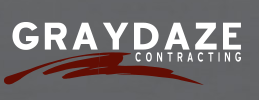The Need For Warehouses Is Booming. How Can Companies Maintain Quality And Consistency?

Companies that operate in multiple markets across the U.S. are often missing one key thing when it comes to warehouse construction: consistency.
Each time a company decides to put up a warehouse in a new city, project managers need to go through the process of hiring new subcontractors for the job. Sometimes, they may need to hire 20 different subcontractors or more. Working with multiple new subcontractors increases each project's uncertainty. With each new partner, managers may be left to wonder how much each job will cost and whether the quality will be up to par.
To remove that uncertainty, nationwide companies are partnering with subcontractors that can travel to meet their needs across markets.
“Project managers have enough on their plates without having to worry about finding top-quality contractors in each new market,” said Mike Ewing, head of business development at Graydaze Contracting, an Atlanta-based single-source painting and sealant installation company. “They need to work with a team who has the resources to follow them and provide consistent service nationwide.”
Rather than finding new contractors in each submarket, working with Graydaze allows warehouse builders to work with a single partner, whose trained employees follow them to every local site, no matter the market.

Ewing said companies need stable partners now more than ever since the e-commerce boom has caused tremendous growth in the demand for warehouses.
“As e-commerce is growing, contractors are facing skilled labor shortages and increasing construction costs,” Ewing said. “We help our customers mitigate these factors by reducing our overhead costs and consistently bringing on and training new crews with our in-house quality control and safety teams.”
A durable and consistent paint job is something that industrial developers often overlook, Ewing said. While problems with a building’s roof or HVAC installation are obvious, painting issues may be harder to spot, but can be just as damaging to the marketability of a warehouse. After all, Ewing said, paint jobs lease buildings.
“We are all taught not to judge a book by its cover, but if you pull up to a building with faded accents and rusted metals, you are more likely to assume there may be other deferred maintenance items,” Ewing said. “A good paint job can change the feel of the building.”

Partnering with a single contractor can take the guesswork out of hiring for painting and sealant jobs, ensuring a high level of quality and positively impacting a company’s bottom line.
“Keeping the paint and sealant under one contract simplifies the process for the general contractor,” Ewing said. “Instead of having two different contractors, with different schedules and potentially conflicting material compatibility, the general contractor can now make one phone call and know that everything is handled.”
Ewing said smaller contractors who only operate locally may not have strong negotiating power with suppliers since they purchase a limited amount of materials. Since Graydaze primarily focuses on large-scale projects, it is able to negotiate material costs down across a wide range of national suppliers and then pass along the cost savings to its customers.
Graydaze’s model has allowed the company to scale and travel alongside its clients and grow with them. ARCO Design/Build Senior Superintendent Fred Poinsett said that Graydaze’s reach means his company is able to use its team for every project.
“We travel all over the country,” Poinsett said. “The fact that Graydaze has the assets, manpower and stability to follow us wherever we go is a huge asset.”
This feature was produced in collaboration between Bisnow Branded Content and Graydaze Contracting. Bisnow news staff was not involved in the production of this content.

